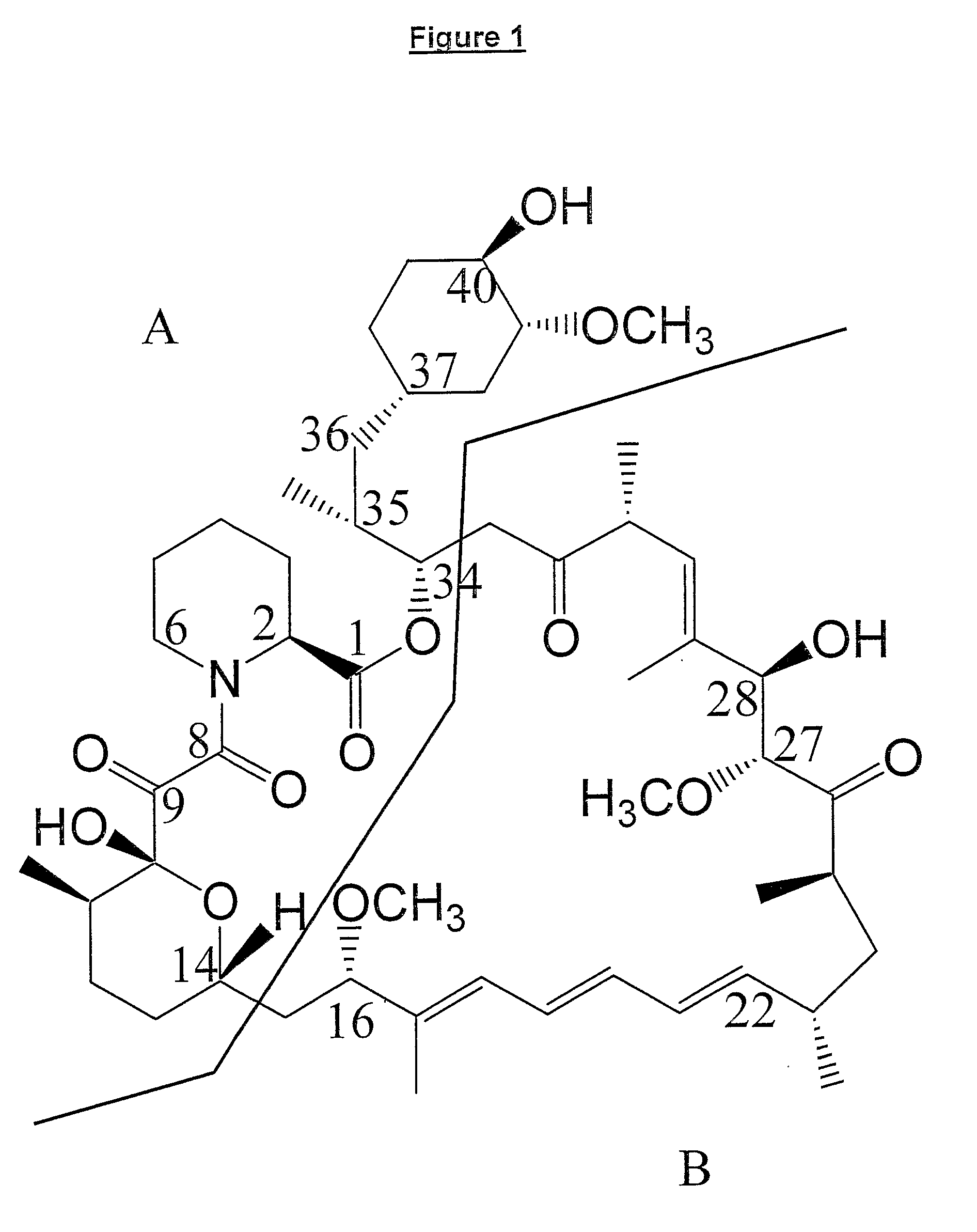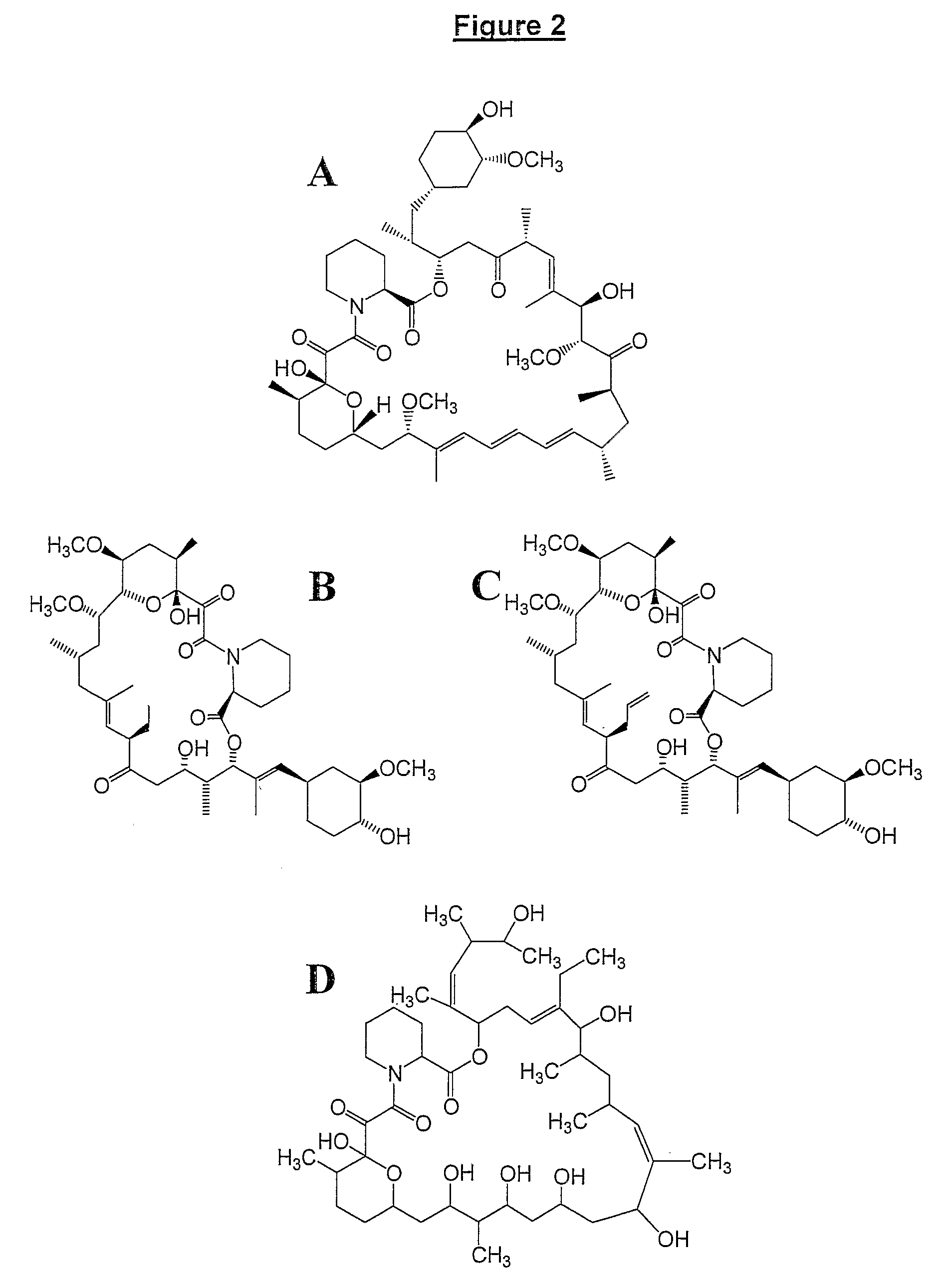Production Of Polyketides And Other Natural Products
a technology of polyketide and natural products, applied in the field of polyketide and other natural products, can solve the problems of limited utility, difficult site selection, and difficult work
- Summary
- Abstract
- Description
- Claims
- Application Information
AI Technical Summary
Benefits of technology
Problems solved by technology
Method used
Image
Examples
example 2
Array Feed of Starter Acids to S. hygroscopicus MG7-9
[0398]
TABLE 3Sources of acids for use in the array feeding experimentCom-StockAcidpanynumbersynthesiscyclohexanecarboxylic acidAldrich10,183-4(1R*,3R*,4R*)-3,4-in housedihydroxycyclohexanecarboxylic acidbymethod A1-cyclohexenecarboxylic acidAldrich32,836-73-cyclohexenecarboxylic acidAldrich45,375-7cycloheptanecarboxylic acidAldrichC9,850-0ethyl (1R*,5R*)-5-hydroxycyclohex-3-in houseenecarboxylatebymethod Bethyl (1R*,4R*)-3-fluoro-4-in househydroxycyclohexane carboxylatebymethod C3-(cis / trans)-Aldrich33,061-2methylcyclohexanecarboxylic acid
Method A: Synthesis of (1R*,3R*,4R*)-3,4-dihydroxycyclohexanecarboxylic acid
[0399]
(1R*,3R*,4R*)-3,4-Dihydroxycyclohexanecarboxylic acid was readily attainable from commercially available racemic 3-cyclohexene carboxylic acid. This acid was epoxidised through treatment with meta-chloroperbenzoic acid and converted to the (1R*,3R*,4R*)-4-hydroxycyclohexane-1,3-carbolactone in situ by the addition o...
example 3
Construction of Conjugative Vector pLL150
[0403]Plasmid pSGset1 (WO 04 / 007709) was digested using SpeI and BstEII and the 2.481 kbp fragment was isolated and ligated with vector pRT801 (Gregory et al., 2003) similarly digested with SpeI and BstEII. After transformation into E. coli DH10B, colonies were screened by restriction enzyme digestion and the final plasmid pLL150 was isolated. See FIG. 8.
example 4
Isolation of 17-desmethylrapamycin by complementation of S. hygroscopicus MG7-9 with a cassette of auxiliary genes
i) Generation of Complementation Plasmid pLL158 Containing the Rapamycin Auxiliary Genes rapK, rapI, rapJ rapN, rapO, rapM, rapQ and rapL (rap KIJN / OMQL)
[0404]Plasmid pSGsetrapKIJN / OMQL (WO 04 / 007709) was digested using SpeI and HindIII and the 8.516 kbp fragment (containing rap KIJN / OMQL) was isolated and ligated with conjugative vector pLL150 similarly digested with SpeI and HindIII. After transformation into E. coli DH10B, the final plasmid pLL158 was identified and confirmed by restriction enzyme digestion.
ii) Isolation of Strain S. hygroscopicus MG7-9 (pLL158)
[0405]E. coli ET12567, harbouring the plasmid pUZ8002 was transformed with pLL158 to generate the E. coli donor strain for conjugation. This was used to transform S. hygroscopicus MG7-9 by conjugation. Apramycin resistant colonies were isolated on media 1 (with 50 mg / L apramycin and 25 mg / L nalidixic acid) and ...
PUM
| Property | Measurement | Unit |
|---|---|---|
| Temperature | aaaaa | aaaaa |
| Temperature | aaaaa | aaaaa |
| Volume | aaaaa | aaaaa |
Abstract
Description
Claims
Application Information
 Login to View More
Login to View More - R&D
- Intellectual Property
- Life Sciences
- Materials
- Tech Scout
- Unparalleled Data Quality
- Higher Quality Content
- 60% Fewer Hallucinations
Browse by: Latest US Patents, China's latest patents, Technical Efficacy Thesaurus, Application Domain, Technology Topic, Popular Technical Reports.
© 2025 PatSnap. All rights reserved.Legal|Privacy policy|Modern Slavery Act Transparency Statement|Sitemap|About US| Contact US: help@patsnap.com



